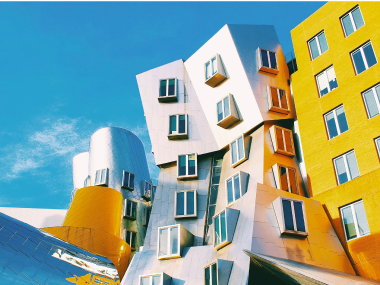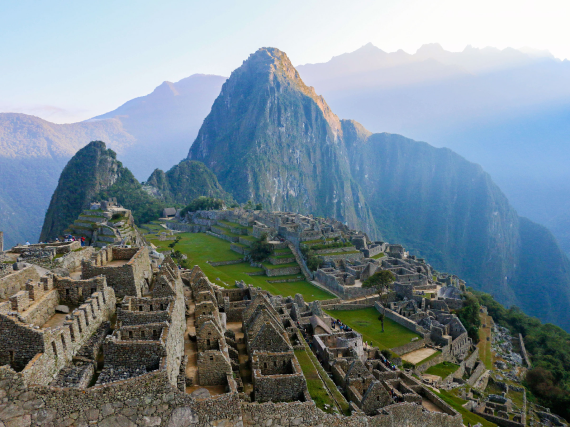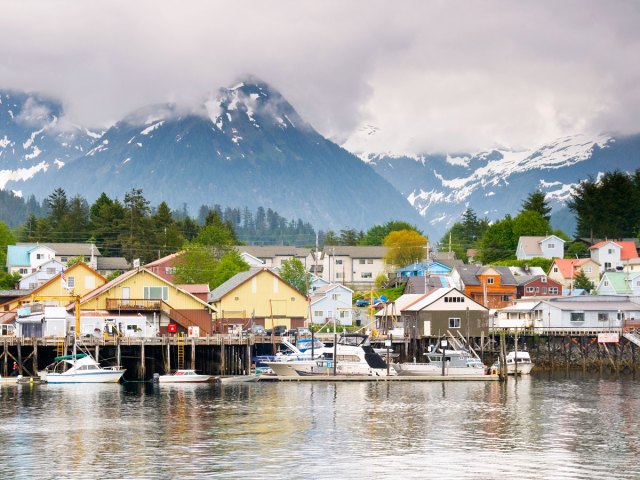Hotels, motels, and resorts share many similarities: They all provide a place to sleep, a warm shower with a few fresh towels, and the privacy of having a room to yourself. But despite offering the same basic amenities, each of these accommodations comes with a distinct set of expectations. For instance, staying at a motel is a much more bare-bones experience than a resort offering a plethora of lavish perks. Let’s take a look at what makes hotels, motels, and resorts unique from one another.
What Is a Hotel?

In the most straightforward sense, a hotel is an establishment that provides lodging, basic services, and sometimes meals to travelers at a cost. But there’s no strict set of rules for what defines a hotel, as they can be big or small, luxurious or simple, expensive or cheap. Hotels also aren’t confined to any single area — they can be found in major cities, alongside rural roads, and even in unusual locales such as in caves or underwater. And they can vary wildly in size — smaller hotels may have just a few rooms, while the world’s largest hotel (First World Hotel in Malaysia) has 7,351.
That said, there are several traditional features you can reasonably expect to find at a standard hotel. These amenities generally depend on the hotel’s star rating. One-star hotels may provide only a bed and bathroom, while two-star hotels may offer breakfast and a daily housekeeping service. The more stars a hotel has, the greater the range of amenities, with high-end hotels offering perks such as a business center, pool, and concierge service.
Hotel guests should also expect to share communal spaces with other visitors. This includes the reception desk, any bars or restaurants, the hotel gym, and so on. While some hotels may offer private dining options or a dedicated concierge, this is far from the norm, and you should expect to interact with other guests during your stay.
Ultimately, “hotel” is a broad, umbrella term in the world of hospitality, and it can be used to describe a wide variety of accommodations. In fact, it may be easier to note what’s not a hotel than what is. Hostels, for instance, aren’t considered hotels, given they offer shared sleeping spaces as opposed to private rooms. Airbnb or similar vacation rental listings are also in a separate category of their own, as a person’s private home is just that — a home, not a hotel. Bed-and-breakfasts aren’t classified as hotels either, as the proprietor traditionally lives onsite. So like Airbnbs, this makes B&Bs a private home, only one that’s been converted to accommodate several paying guests at any given time.
What Is a Motel?

Motels are a specific type of hotel — the term is a portmanteau coined in the 1920s that combines the words “motorside” and “hotel.” Motels were originally designed amid a boom in personal vehicle ownership. According to the Library of Congress, the number of passenger cars in the U.S. grew from 6.5 million in 1919 to 23 million in 1929, and the motel industry began as a way to cater to this new vehicle-centric way of life.
With car ownership on the rise, motor lodges began popping up alongside major thoroughfares around the country. Early motels were intended to provide a quick night’s stay for drivers taking a longer journey. They were also designed to accommodate many vehicles, as evidenced by their large, complimentary parking lots. As a result, few motels existed in major cities, where space came at a premium.
Motels made travel easier for drivers, who previously had to venture into the city and find a garage to park in before walking several blocks to a hotel — what a 1926 Los Angeles Times article described as “a long walk through dark streets in a strange town.” A 1925 article in the San Luis Obispo Daily Telegram noted of motels, “A traveler arriving at night, or at any other time, need not climb out of his car and go into the office to register… Instead, the man in charge comes out to the car and one may register without leaving the car at all.”
This is also why motels were designed to face directly onto the parking lot. Rather than venture through a communal lobby, drivers could pull their vehicle right up to the door to their room and head directly inside.
However, motels began to dwindle in popularity during the 1950s. After the introduction of the Interstate Highway System, many large chain hotels built traditional roadside accommodations of their own, taking away business from the boutique motels. Today, the word “motel” implies a design aesthetic more than anything, reflective of those days when these establishments catered to motorists. Most remaining motels are still just one or two stories tall, and each room can be accessed directly from the parking lot.
What Is a Resort?

While resorts often feature hotels on the property, the term generally refers to a larger area that offers more than accommodations. Resorts may include a hotel as well as a dedicated entertainment venue, several restaurants, and more. It would be more apt to describe the area where guests sleep as the “resort hotel” rather than just the “resort.”
Unlike at a standard three-star hotel, the idea of a resort is to offer guests everything they need right on the property, so they don’t need to travel elsewhere. Resorts are often all-inclusive experiences that offer dining, entertainment, spa access, and a comfortable bed or suite. Resorts are also designed with leisure in mind, and guests rarely go for business purposes. Compare that to a normal hotel, which some people visit for business and others for pleasure.
Resorts come in a variety of shapes and sizes. You may stay at a mountainside ski resort where everyone has their own chalet, or perhaps at a resort on the beach, where guests stay in a high-rise overlooking the ocean. The one constant is that they offer more than just the accommodations. Resorts are also often destinations in themselves, whereas most hotels are usually a place to sleep before heading to the main event.
More from our network
Daily Passport is part of Inbox Studio, which publishes content that uplifts, informs, and inspires.






















